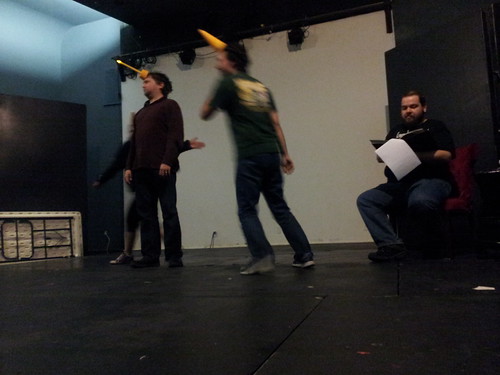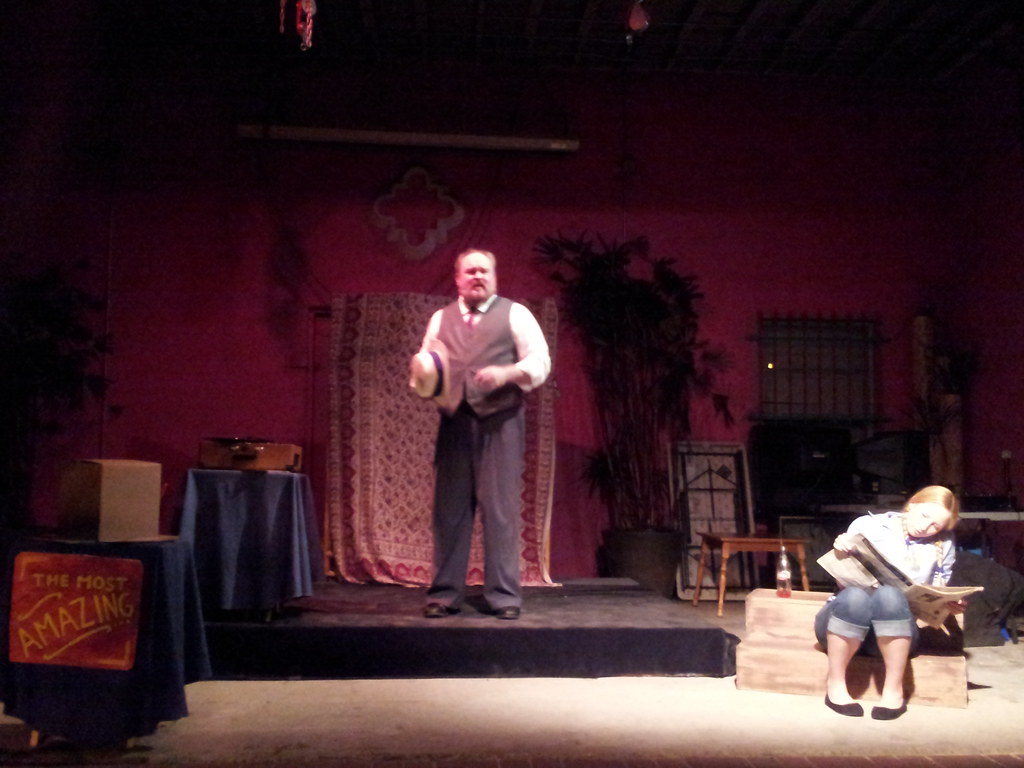Sometimes, over a few too many beers, I get in a tiresome conversation with fellow theatre types who start to piss and moan that theatre is a dying art. And while I think it is not nearly as relevant as it may have been at one time in history, it is not dying any more than any other traditional media is quote-unquote dying.
My would-be conversational partners then become armchair futurists and make drunken claims that television and movies were wearisome, but now the Internet, in particular, is the juggernaut that will swallow live theatre. How can theatre compete? Theatre performed live for an audience in real time will soon be seen only in museums.
And here is what I point out... that actually, the internet is just one more thing, and not even in the same category as theatre. The two things are not direct competitors.
Of course, the Internet has changed the entire media landscape, especially as media giants ponder over how to earn revenue on the Internet. But, seriously, it is not even close to wiping out TV, radio and cinemas... let alone live theatre. The lights of arts venue marquees still glow as brightly as ever.
The reasoning I give for this is based on something I read about a year and half ago in Michio Kaku's excellent book The Physics of the Future.
Kaku points out that humans have changed little since caveman days. That is to say, genetic and fossil evidence indicates that modern humans, who looked just like us, emerged from Africa more than 100,000 years ago. The thing is, there is no evidence that our brains and personalities have changed much since then. Basically, if you took someone from that period, he would be anatomically identical to us. Further, Kaku points out, if you gave him a bath and a shave, put him in a suit, and then dumped him on Wall Street, he would be physically indistinguishable from everyone else. Along with this, then, our wants, dreams, personalities, and desires have probably not changed much in 100,000 years either. We probably still pretty much think like our caveman ancestors.
This is where Kaku's "Cave Man Principle" comes into play. No matter what technology arises, we still default to our primitive desires time after time. Kaku explains that our forebears always demanded “proof of the kill.”
It was never enough to brag about the big one that got away. Having the fresh animal in our hands was always preferable to telling a whooper about the one that got away. In the same way, we want hard copy whenever we deal with files. We instinctively don’t trust the electrons swimming in our computer screen, so we print our e—mails and reports, even when it’s not really necessary. That’s why the paperless office never came to be.
Also, Kaku states, our ancestors always seemed to like face—to—face encounters. This helped us to bond with others and to read their hidden emotions. Our cave man ancestors, many thousands of years before they developed speech, used body language almost exclusively to convey their thoughts and emotions.
This is the reason, Kaku says, why cybertourism never really succeeded. Sure you can see a picture of the Sistine Chapel, but it’s another thing to have the bragging rights of actually seeing it in person. In a similar way, listening to a CD of your favorite singer is not the same as feeling the sudden rush when actually seeing this musician in a live concert, surrounded by all the excitement, vibes, and noise. This means that even though we will be able to download realistic images of our favorite drama or celebrity, there is nothing like actually seeing the drama on stage or seeing the actor perform in person. Fans go to great lengths to get autographed pictures and concert tickets of their favorite celebrity, although they can download a picture from the Internet for free.
Kaku states:
"[The Cave Man Principle] explains why the prediction that the Internet would wipe out TV and radio never came to pass. When the movies and radio first came in, people bewailed the death of live theater. When TV came in, people predicted the demise of the movies and radio. We are living now with a mix of all these media. The lesson is that one medium never annihilates a previous one but coexists with it. It is the mix and relationship among these media that constantly change."
See, our ancient ancestors always wanted to observe or experience something for themselves. they didn't want to rely on hearsay. It was crucial for survival in the forest to rely on actual physical evidence rather than rumors. Kaku is confident that even far into the future, we humans will still have live theatre just as we will still chase celebrities. It is an ancient heritage of our distant past..
"So there is a continual competition between High Tech and High Touch, that is, sitting in a chair watching TV versus reaching out and touching things around us. In this competition, we will want both. That is why we still have live theater, rock concerts, paper, and tourism in the age of cyberspace and virtual reality. But if we are offered a free picture of our favorite celebrity musician or actual tickets to his concert, we will take the tickets, hands down."
So Kaku's Cave Man Principle is a wonderful argument against any notion of the theatre dying out. We humans prefer to have it all... we'll take both the actual and the digital (and everything in between).As more stuff comes along, we just make more room to fold more stuff into our lives. But, here's the deal: if given a choice we will chose the live, first-hand experience, like our cavemen ancestors.
Interested in the book? Check it out... HERE
























